- Our Products
- Upper Extremity
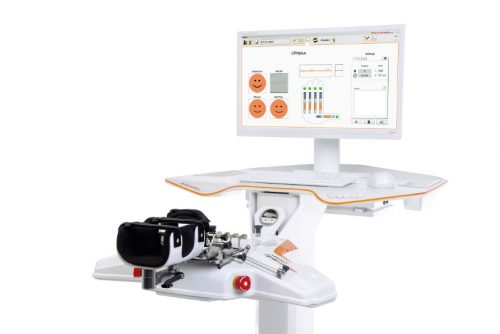 Amadeo Finger-Hand-Rehabilitation
Amadeo Finger-Hand-Rehabilitation
Amadeo is giving hands back their grip and fingers their finesse. Patients who are barely able or unable to grasp can perform hundreds of robot-assisted grasping movements. It won’t train a new Mozart. But it will help patients return to the piano, handwriting Christmas cards, and grabbing life firmly by the horns.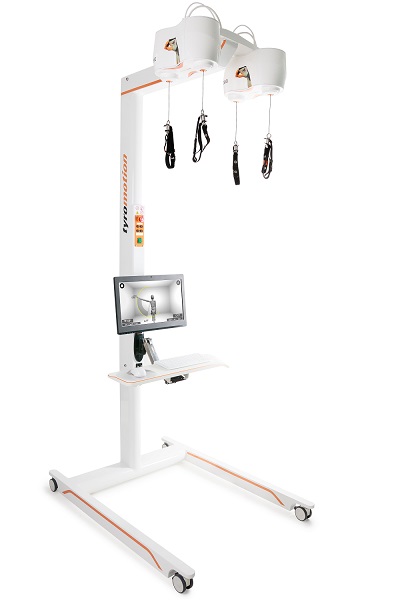 DiegoShoulder-Arm-Rehabiliation
DiegoShoulder-Arm-Rehabiliation
Diego is designed to strengthen what’s important. Whether proximal or distal training, Diego purposefully supports the rehabilitation of natural motion, allows the handling of everyday objects to be relearned, and is usable by adults and children alike.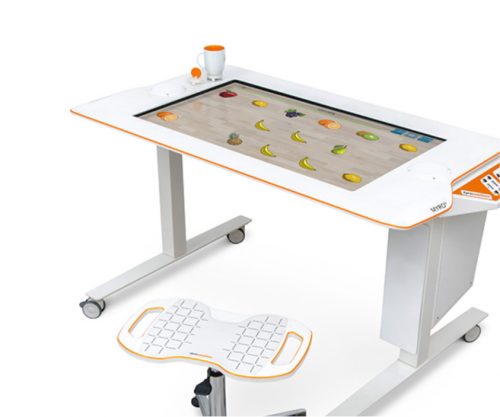 Myro Interactive and task-specific therapy
Myro Interactive and task-specific therapy
Myro is made for making humans get better! The sensor-based surface enables task-oriented rehabilitation with real objects, trains the patient’s cognitive abilities, and improves motor abilities of the upper extremity.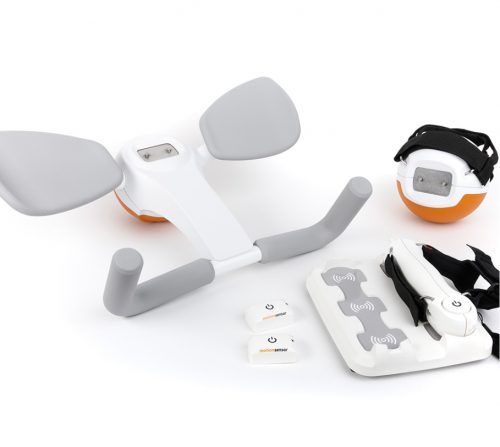 Pablo Upper Extremity Rehabilitation
Pablo Upper Extremity Rehabilitation
As a multifunctional rehabilitation device with comprehensive accessories, Pablo enhances classical therapy exercises with biofeedback, objective assessments, and gamification. It won´t train the next Picasso. But it will help patients to take back control of their lives.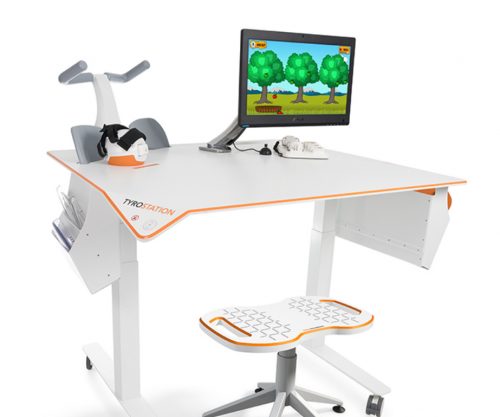 Tyrostation The perfect therapy setting
Tyrostation The perfect therapy setting
The Tyrostation is home to all components of Pablo and Tymo and provides ergonomic adaptability for patients. Sometimes, it´s about the little things in life – or therapy.
- Lower Extremity
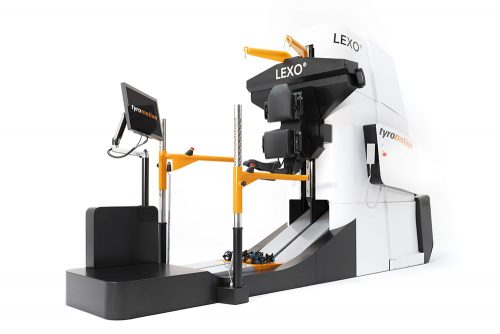 LexoGait and Locomotion
LexoGait and Locomotion
Lexo is a revolutionary gait trainer and impresses with fast setup, high patient activity and optimal trunk support. It encourages active participation and enables therapists to focus fully on their patients.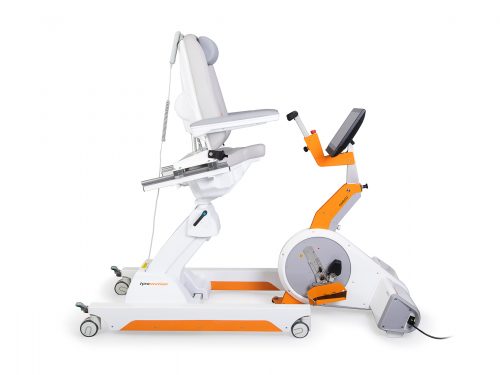 Omego Plus Gait training for the goals across all phases
Omego Plus Gait training for the goals across all phases
More than just a therapy bike! Omego Plus combines uni- and bilateral leg training, leg press, stepper, cycling & foot lift training in one device. Stride stronger with Omego Plus!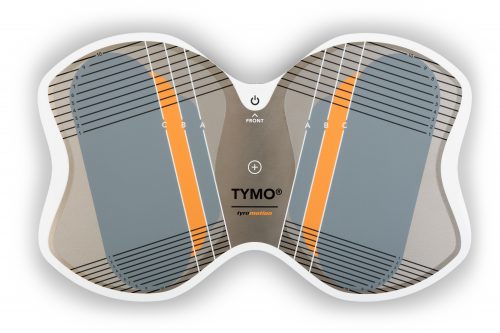 Tymo Balance training and postural control
Tymo Balance training and postural control
Small but powerful! Tymo is a versatile measurement and therapy system for the whole body. In addition to the standing position, Tymo offers a wide range of options for maximum variety during therapy.
- MTT-Line
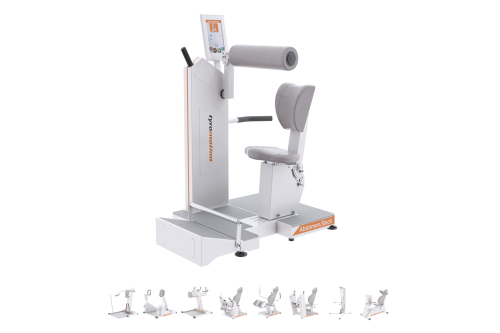 MTT-LineMedical training therapy
MTT-LineMedical training therapy
Get back in the game with the MTT-Line! The Medical Training Therapy devices are specifically designed to strengthen the six major muscle groups of the human body. Barrier free and maximum adjustability make the devices accessible for all types of patients.
- Software
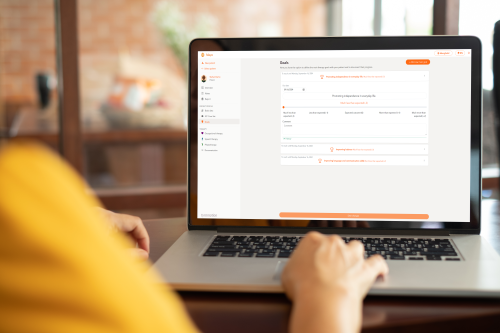 Maya Therapy Platform
Maya Therapy Platform
Maya reduces paperwork, standardizes documentation, and automates reporting, making administration effortless and efficient. Designed for therapists to work wonders!
- Upper Extremity
Patienten Story
Patient Story: Learning to walk with Paraplegia
30. August 2021 ● 7 min Reading time
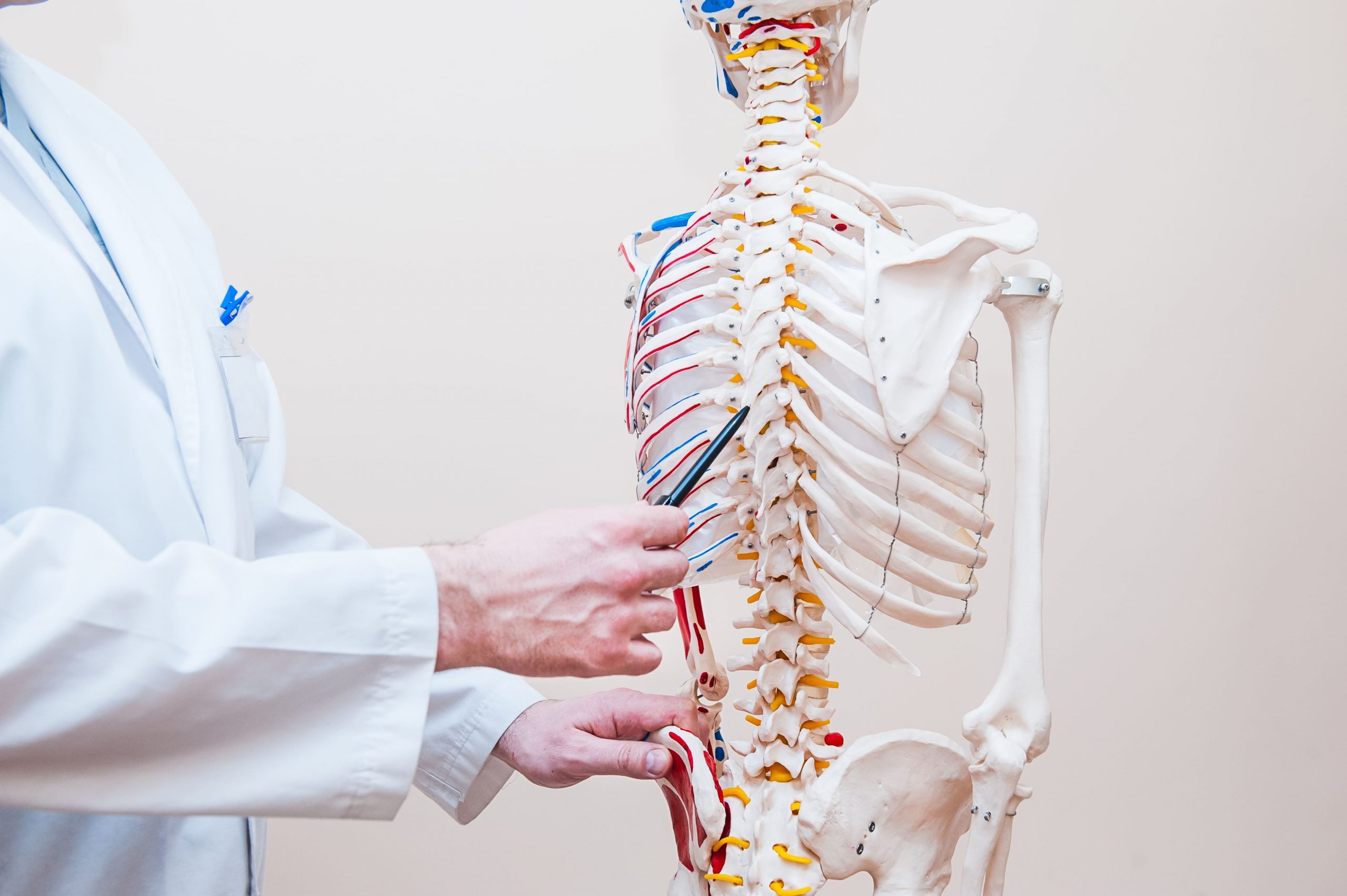
The position and extent of spinal cord injury determine the form of paraplegia
“Suddenly, I was a patient myself,” Nina says of her herniated disk, which led to incomplete paraplegia.

In the beginning, no one could tell her what the extent of her limitations would be. Around ten days after surgery on her spine, the doctors were optimistic. Initial movements in Nina’s toes indicated incomplete paraplegia, where motoric and sensory systems are only partially affected. With continued gains in leg movement, Nina had the chance to walk again. “50% of rehabilitation is decided by doctors, therapists, and equipment. The other 50% is the share I can take in my own healing process,” Nina says with confidence.
After acute rehabilitation, Nina started rehabilitation of Phase D in January 2021 at the GLG Fachklinik Wolletzsee, in the north of Berlin.
Since 2016, the GLG Fachklinik Wolletzsee has been using technology-based devices to supplement conventional rehabilitation measures. In addition to the upper extremity lab established some years ago, the walking studio with two OMEGOs and the gait trainer, Lexo, was opened in August 2020. “Previously, gait training was mainly limited to patients walking the corridors with a therapist,” explains the head occupational therapist at the clinic Katja Siebold during the opening ceremony; two to three therapists were needed to support each patient. Lexo now assists with this work; the gait robot supports the patients and allows them to work on their walking ability. Above all, Lexo allows for the increased repetitions required to see measurable results. In everyday hospital life, technology-based devices aid the therapist, by creating additional, valuable treatment time for patients.

Head therapist Katja Sieboldt, therapist Anja Müller, Brandenburg’s Minister of Health Ursula Nonnemacher and Tyromotion CSO Wolfram Veitl at the opening ceremony of the walking studio
Initially, Nina was able to walk short distances (40 meters) with the aid of a walking frame. Short breaks included.
In the clinic’s walking studio, she had the opportunity to perform intensive training using the latest technology. Nina experienced mixed feelings during her first few times in the Lexo gait trainer; “At the beginning, I really clenched and cramped, because I was afraid to tip over. It was a real experience. My head changed over relatively quickly, and I understood that I can just walk with Lexo. I didn’t have to counteract.” When she started using Lexo, Nina was able to walk very short distances and required frequent rest breaks. She participated in two therapy sessions per week.


“During therapy, I repeatedly have the feeling that I am not making any progress. It helps to see the protocols at Lexo and OMEGO. The devices don’t distort results to make their statements look better. They clearly and neutrally indicate how my strength, endurance, and coordination develop. Even small advances become visible and increase my motivation.”
Nina K.
At the end of her inpatient rehabilitation after paraplegia, Nina can walk on the Lexo for 25 minutes a session.
Nina now can walk further distances with less rest breaks during her therapy sessions. Thanks to the optional seat on Lexo, she can relax her legs completely during a rest break. She no longer needs weight relief through the straps. When leaving the rehabilitation facility, Nina can walk about 100 meters with her walking frame. She can even manage short distances without a walking frame. At home, she is already doing well walking without any aids.
We wish you all the best, dear Nina! Stay strong!
Author: Michaela Partel
You might also be interested in
4. April 2023
Health
Rehabilitation
Stroke nutrition guidelines for optimal health
Nutrition as the key part in health and well-being of stroke survivors A healthy, balanced …
21. March 2023
Rehabilitation
Kinesio taping in neurology as a useful therapy supplement
The Kinesio tape and its usefulness in neurological therapy What was originally known only from …
7. March 2023
Rehabilitation
Exercises against freezing of gait in Parkinson’s disease
When the legs freeze – how does the symptom “Freezing of Gait” manifest itself? Parkinson’s …



 Contact
Contact 

 Contact
Contact 

